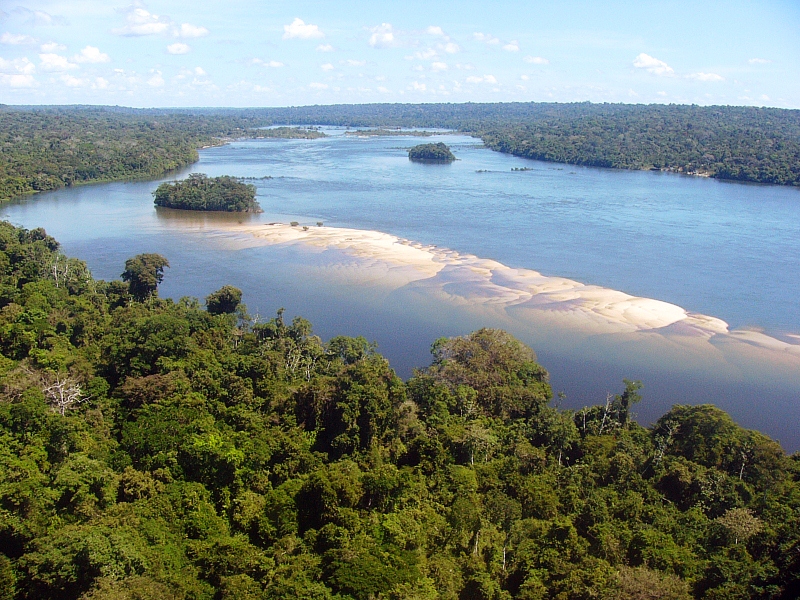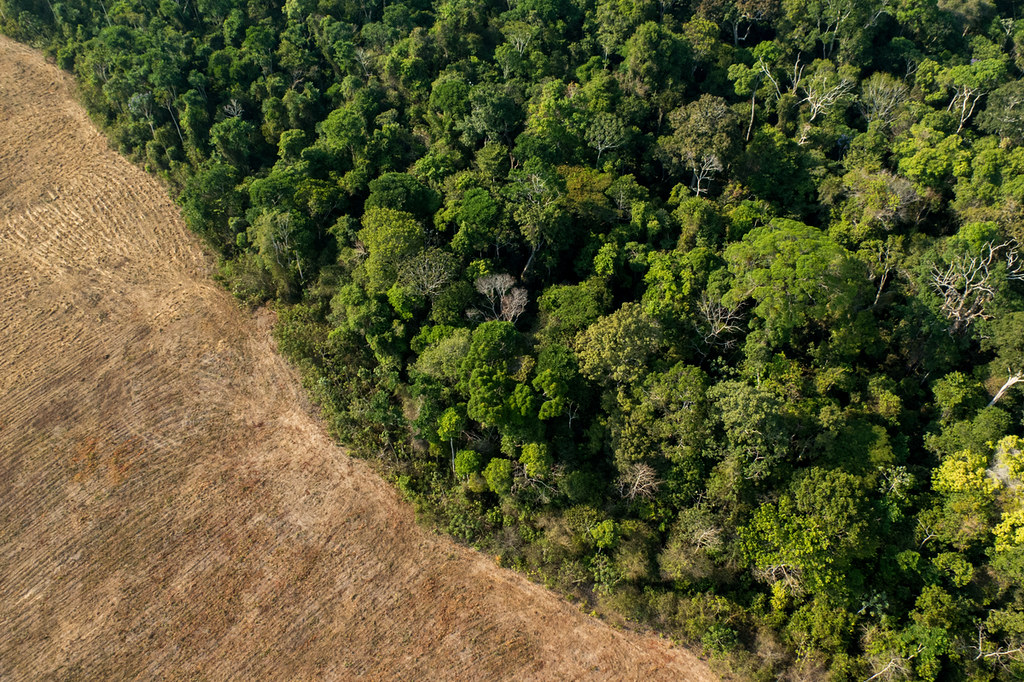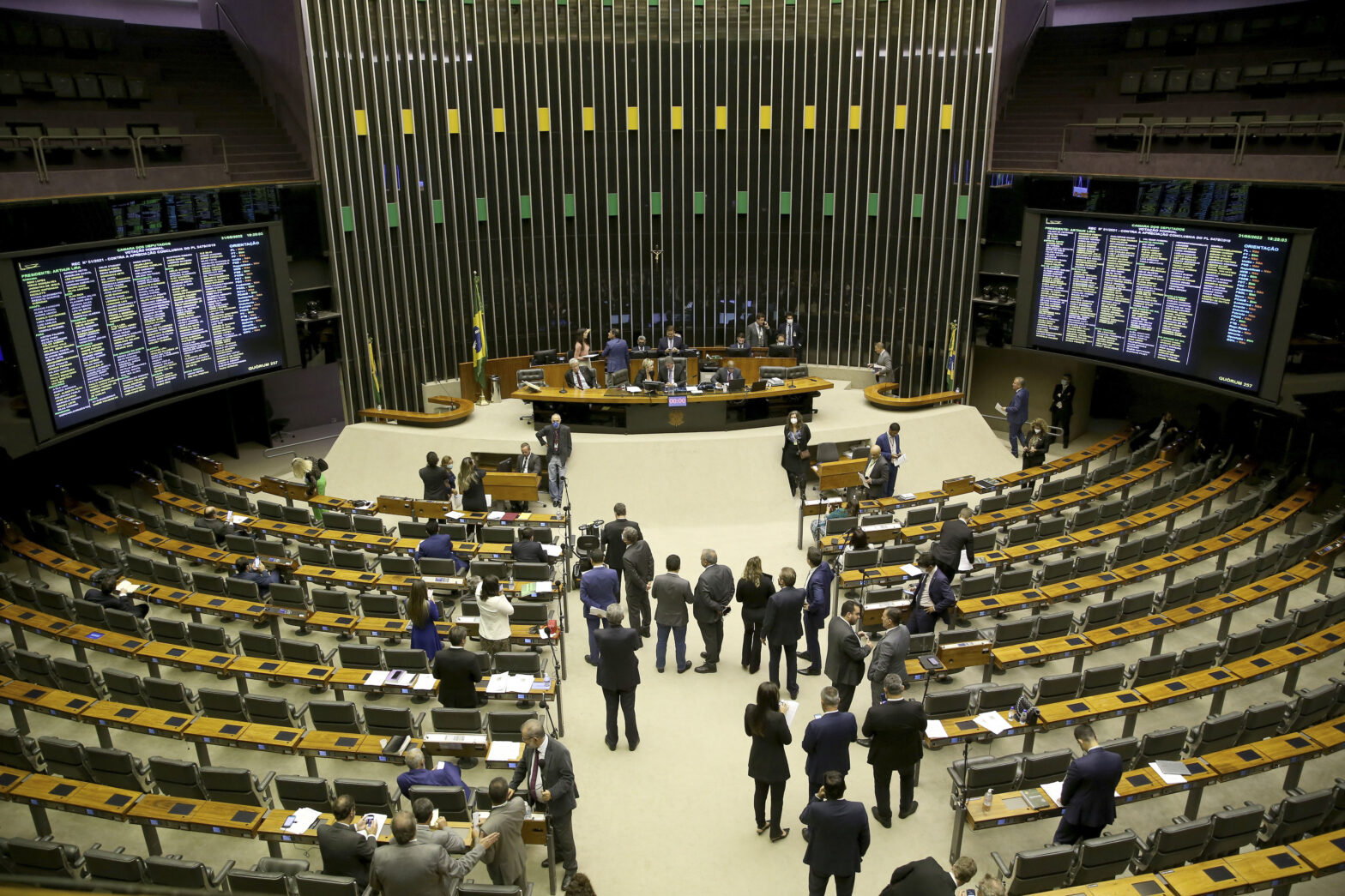A Brazilian Climate Observatory study found that the dense vegetation in the states of Amazonas and Amapá, regions whose territories are more than half composed of Conservation Units and Indigenous Territories, was able to remove all the CO2e that had been released to their atmosphere in 2021.
Brazil’s most well-preserved state, Amazonas still holds 91% of its standing forest, and over half of its vast territory is composed of Conservation Units and Indigenous Territories. Here, some 800 square kilometers of forest provide a range of ecosystem services to the planet. One is removal of greenhouse gases from the atmosphere.
This absorption is driven by photosynthesis in plants, which need large quantities of carbon to grow and survive. This means that they capture CO2 from the atmosphere, returning only the oxygen.
In 2021, the dense vegetation in Amazonas’ protected areas captured nearly 150 million tons of carbon equivalent (CO2e) : The standardized international measure for the quantity of greenhouse gases (GHG) which converts them all into the common unit of carbon dioxide., which is responsible for global warming. This number is higher than the state’s gross emissions that year, meaning the state had a negative balance of emissions in 2021. The term “equivalent” means that other greenhouse gases like methane and nitrous oxide were also accounted for, but were converted into the common unit of carbon dioxide.
In the nine Brazilian states that lie within the Legal Amazon, Conservation Units: A territory that is governmentally demarcated, managed, and protected for the maintenance of ecosystems and natural resources to benefit society. and Indigenous Territories: Federally recognized and demarcated territories for the preservation of Indigenous ways of life and culture throughout Brazil. removed 27% (354.4 million tons) of the gross CO2 equivalent emitted in the region in 2021. Of the total volume removed inside the Amazon, 64% was removed inside protected areas: Regions protected by environmental legislation on land or in freshwater and marine environments..
According to the 10th edition of the Greenhouse Gas Emission and Removal Estimating System (SEEG), a study released by the Brazilian Climate Observatory together with IEMA, (the Institute for Energy and the Environment), IMAFLORA (Institute of Forest and Agriculture Management and Certification), IPAM (Amazon Environmental Research Institute) and ICLEI (Local Governments for Sustainability).
IPAM researcher Bárbara Zimbres believes that Amazonia’s protected areas, especially its Indigenous Territories, play a fundamental role in the fight against global warming. “They do much more than help to remove carbon from the atmosphere. Their main role is to curb deforestation, the largest factor that generates emissions in Brazil.”
While protected areas have managed to greatly slow the emissions generated in Amazonia, GHG emissions had a net balance of 739.9 million tons of CO2e. This means that the Amazon region emitted more carbon dioxide equivalent than it captured. But hasn’t always been this way.
Zimbres explains that between 2010 and 2012, the forest was able to absorb almost all of its emissions. “This happened after a decade of work to reduce deforestation. But in recent years, we have once again seen an upsurge in the devastation. This means that emissions have become predominant, especially after 2017.”
She also warns of a serious phenomenon that is happening in the region: the gradual loss of gas absorption by vegetation. “Even the intact forests have been losing their potential for capture because of climate change. The weather has been drier and this impairs the process.”
According to SEEG, 76.6% of the CO2e released inside Amazonia last year came from logged forest. “Amazonia releases more than half of all emissions in Brazil. And this is because of deforestation. If we don’t control the devastation in the region, it will make no difference if we meet reduction goals from other GHG sources like power, transportation and industry, for example,” evaluates Zimbres.
Agricultural activities, especially cattle farming, were responsible for 21.7% of gross GHG emissions in Amazonia in 2021. According to data from the IBGE (Brazilian Institute of Geography and Statistics), the bovine herd in the region reached record numbers last year, with 97 million head. Four states in the Legal Amazon ranked among Brazil’s leading cattle farming states: Mato Grosso, Pará, Rondônia and Tocantins.
RANKING BY SIZE OF HERD
Below, see how states inside the Legal Amazon rank as compared to the rest of Brazil:
1st - Mato Grosso: 32,424,958 head of cattle
3rd - Pará: 23,921,005
6th - Rondônia: 15,110,301
10th - Tocantins: 10,161,938
11th - Maranhão: 8,561,509
14th - Acre: 4,047,283
19th - Amazonas: 1,496,165
25th - Roraima: 937,989
27th - Amapá: 52,768
Source: IBGE 2021
Cause and effect
If we take the state of Pará as an example, the relationship between deforestation, farming and cattle raising, CO2 equivalent emissions and the role that protected areas play in mitigating these emissions become evident.
Tooltip PRODES: The project that officially maps annual loss of native vegetation within the Legal Amazon.
Pará was the state that cut down the most trees in Amazonia in 2021: 5,234 square kilometers of forest were cut down, according to INPE’s PRODES system. In addition, Pará was home to 24 million head of cattle that year, the second largest bovine herd in the region after Mato Grosso.
The result was release of the largest amount of carbon gas in Brazil: 448 million tons coming from Pará alone. Of this total, SEEG data indicates that 85% were generated by deforestation and 11% by farming and cattle raising. However, nearly 40% of the emissions were removed by vegetation in the state, 65% of which happened in protected areas, which cover half of the state’s land mass.
Meanwhile, the state of Amapá, with 71% of its territory inside protected areas and only 4% of its forest cut, is at the other end of the scale. In 2021, it was the state within the Legal Amazon with the least deforestation, losing a mere seventeen square kilometers of forest. In the Brazilian ranking of bovine herds, Amapá came in last, with 52,700 head of cattle that year.
This resulted not only in the lowest level of gross CO2e emissions in Brazil—4.5 million tons—but the state also managed to absorb four times this volume, making it the only other state in the country to match Amazonas in sequestering more than it had emitted.
In SEEG 10, the Brazilian Climate Observatory’s executive secretary Márcio Astrini warned of the consequences of uncontrolled emissions of the gases responsible for global warming. “There are many different extreme climate events happening in Brazil that impact people’s daily lives like drought, flooding and landslides. And the poorest segment of the population is the hardest hit," he affirms.
There are many different extreme climate events happening in Brazil that impact people’s daily lives like drought, flooding and landslides. And the poorest segment of the population is the hardest hit.
Márcio Astrini, the Brazilian Climate Observatory’s executive secretary
Astrini also points out that emissions in Brazil grew more in 2021 than they had in nearly two decades, attributing the record to President Jair Bolsonaro of the Liberal Party. “This administration has proven itself to be an actual machine for spewing carbon into the atmosphere, negating the climate agenda and doing everything within its power to destroy environmental governance throughout our country, especially in Amazonia, the region that emits the most greenhouse gases.”





